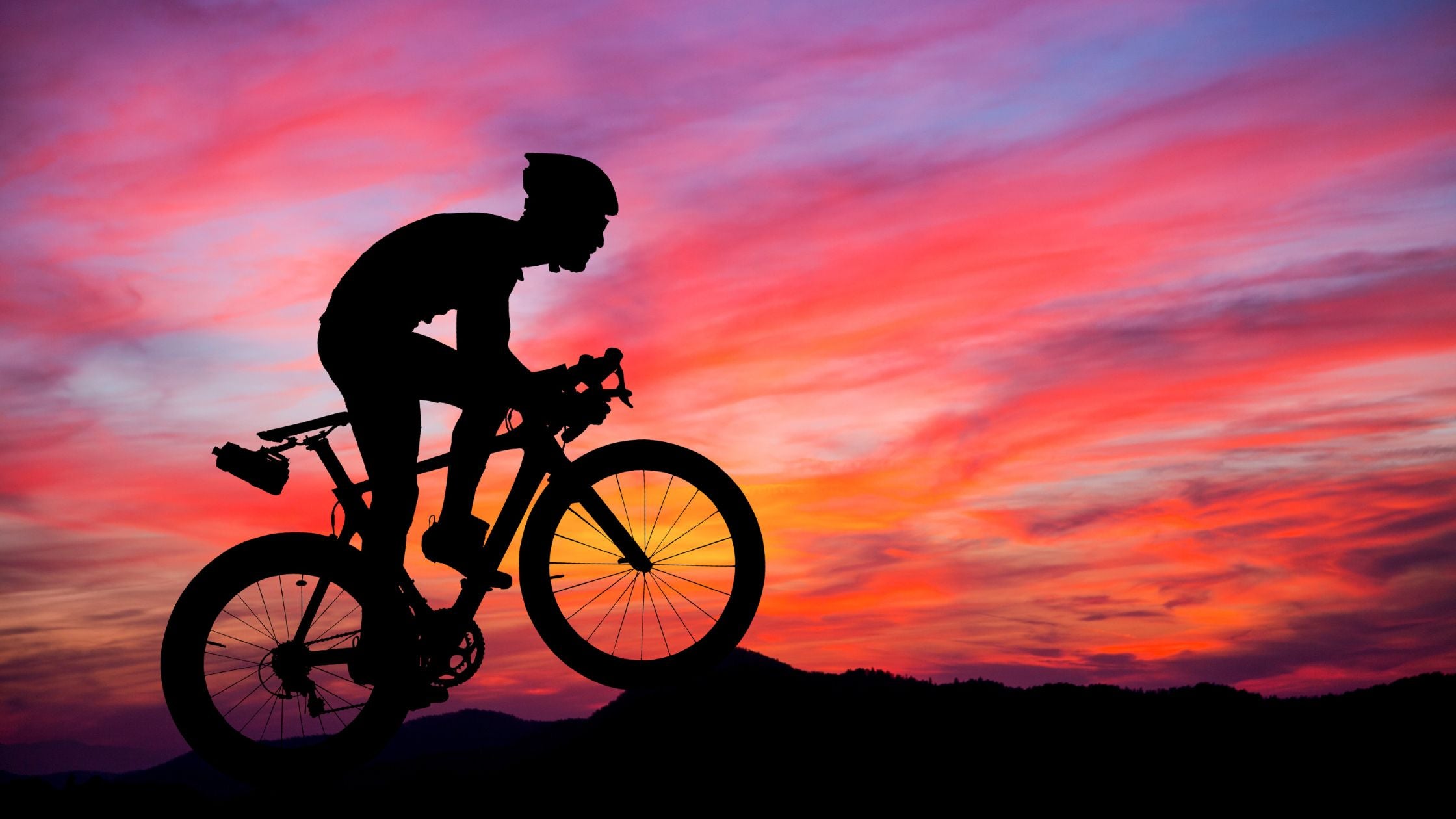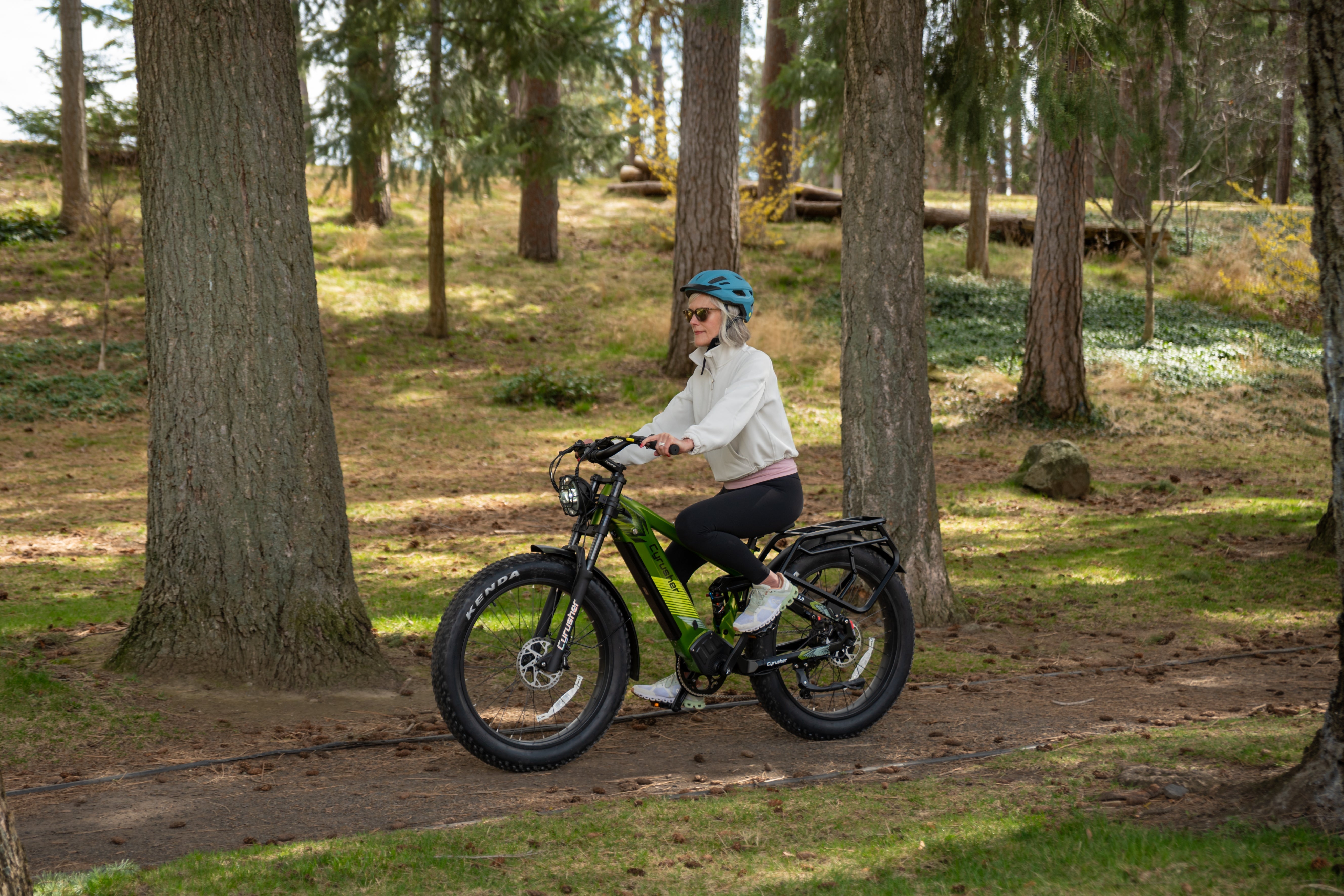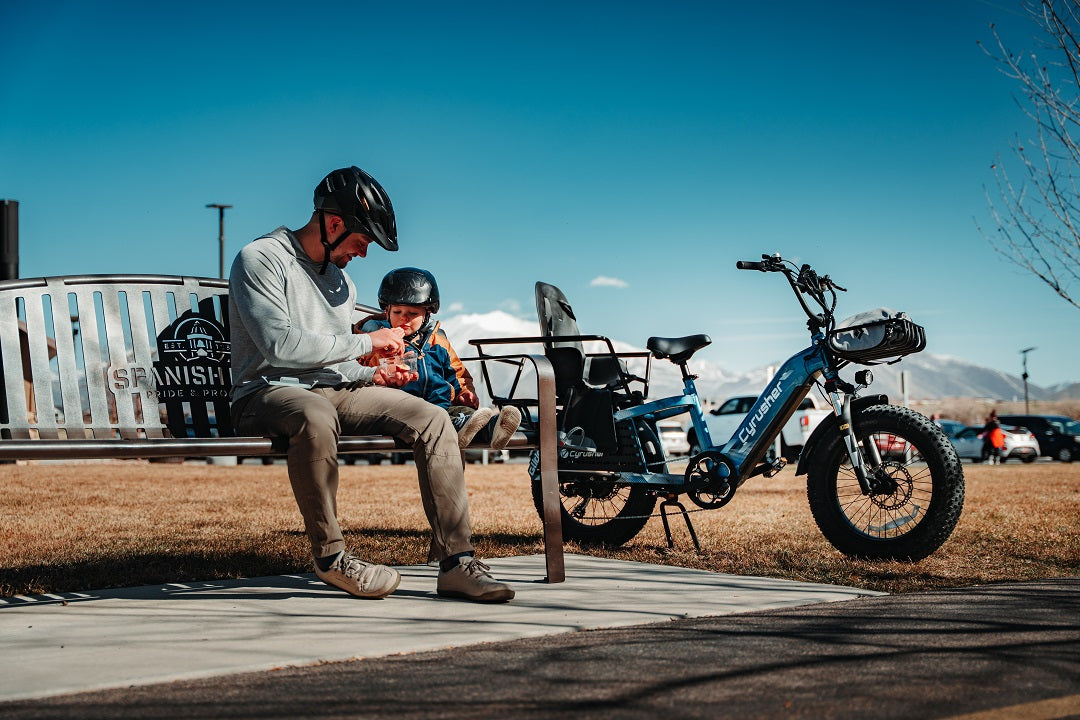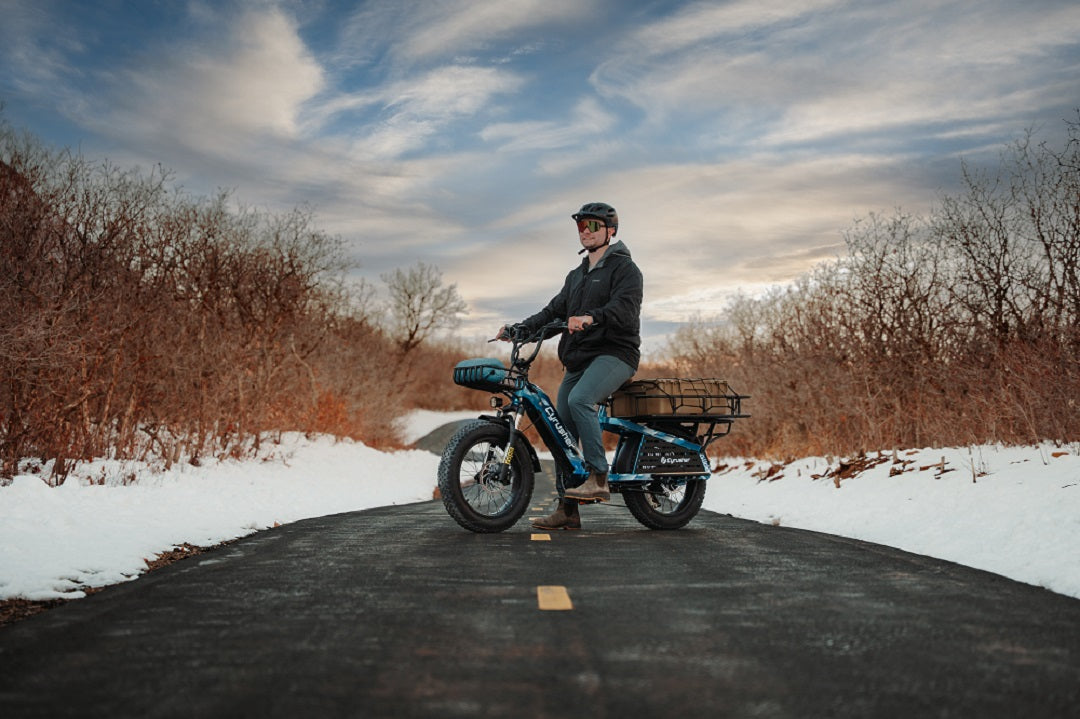Most people have a vague picture in mind when they hear the term 'mountain bike'. However, only a few know what is a mountain bike and how to identify it.
The recent years have seen more and more people push towards healthy lifestyle choices. Mountain biking is one of the best exercises you can do. It is healthy and fun and can even take you to amazing places.
However, before you get into that, you must know the basics of a mountain bike. This article will provide all the necessary information, like mountain bike parts, types, costs, etc. At the end of the article, there will be helpful tips for choosing the right mountain bike.
What is a Mountain Bike?

Mountain bikes are bicycles designed for off-road cycling. They even drive well on uneven terrain and bad patches. Mountain bicycles have very different visual looks and performance compared to other bicycles. Once you know about the basics of a mountain bike, you can identify one just by looking at the cycle.
What is the Difference Between a Mountain Bike and a Regular Bike?
Mountain bikes are built for off-road riding. Regular bikes ride best on roads and highways. Due to this significant difference in the riding style, these bikes are designed differently. While mountain bikes pride themselves on their rugged nature, regular cycles thrive in the area of speed.
When was the first mountain bike invented?
Joe Breeze invented the first mountain bike in 1977. Although early mountain bikes didn't go by this name. First mountain bikes started trending in North Carolina, USA. They were called 'breezers' (after Joe Breeze), 'ballooners', 'klunkers', and 'dirt bombers'. The Smithsonian Institute houses this first mountain bike by Joe Breeze in the National Museum of American History.
What was the first mountain bike brand?
Mountain bikes were first commercially manufactured by a brand called MountainBikes. The company was a partnership between Gary Fisher, Tom Ritchey, and Charlie Kelly. These people are often credited as the co-inventors of mountain bikes. Fisher continued to run the company while Ritchey and Kelly opted out of the business. The brand became known as Fisher Mountain Bikes.
What are the Components of a Mountain Bike?
The components of a mountain bike are different from a regular bike. Most of these components are present in all mountain bikes. These components are:
Cycle Frame
The cycle frame is the part that holds the entire cycle together. Every cycle part is mounted on the frame. MTB frame geometry is aimed toward keeping balance when going over hurdles and bumps.
Mountain bikes have multiple options for frame materials. Common materials are:
-
Steel: Steel was the go-to material for early mountain bikes. Modern mountain bikes are made of improvised steel alloys such as hi-tensile steel and Chromoly.
-
Aluminum: Aluminum alloy is another popular material choice for a mountain bike. The advantage of aluminum alloy is its low density. It keeps the overall weight of the bike lighter.
-
Carbon: Carbon fiber frames have gained much traction in recent years. Carbon fiber frames are composite materials with high strength. There is no possibility of dents in these frames.
-
Titanium: Titanium-based mountain bike frame is very sturdy. However, it turns out to be expensive and heavy. This is why titanium finds limited use in frame materials.
Wheels
Mountain bike wheels are their most identifiable part. Typically, mountain bikes have wider tires compared to the narrow tyres of regular bikes. These tyres have raised tread patterns for improved traction against the ground.
Tires

There are two tire options for mountain bikes- tube tires and tubeless tires. Tires with tubes are the most common option found on mountain bikes. However, tubeless tires have become the preferred option in recent decades due to the ease of repairing punctures and their lighter weight. Both of these options come as knobby tires for mountain bikes.
Wheel Sizes
The wheel size determines if the mountain bike will fit you. Wheel size is indicated as the diameter of the wheel rims. It is measured in inches. Standard wheel sizes for mountain bikes are:
-
24-inch
-
26-inch
-
27.5-inch
-
29-inch
24-inch bike size is usually preferred for junior riding. The 26-inch option was popular in earlier mountain bikes. However, its popularity has decreased due to the 27.5-inch and 29-inch options.
Brakes
The brakes of mountain bikes and regular bikes are similar. The brake levers are often standard design in most types of bikes. The different types of mountain bikes' brakes are:
-
Rim Brakes: Rim brakes consist of a pair of calipers mounted near the bike rim. They are also called caliper brakes. They have low stopping power and high brake pad wear. The cost of replacement of rim brakes is low.
-
Disc Brakes: Disc brakes are standard in most mountain bikes nowadays. The brake pad of disc brakes is mounted on the frame at the tire axle. The location of these brakes provides them with tremendous stopping power. These brakes work with the mechanical motion of a wire connected to the brake lever.
-
Hydraulic Disc Brakes: Hydraulic disc brakes are present in medium to high-end bikes. These brakes work through a hydraulic mechanism instead of the mechanical movement of the brake wire. Even a little lever pressure can generate a large stopping force in these brakes.
It is common for mountain bikes to traverse steep climbs and descents. Therefore, these bikes call for powerful brakes. Disc brakes are always preferred in bikes designed for this purpose. This is why rim brakes are only seen in entry-level mountain bikes.
Suspension
Suspension is the next important part after the mountain bike frame and brakes. The suspension absorbs all the shock and bumps while cycling. Therefore, having a good quality suspension fork on the bike feels comfortable on rough terrain. Modern suspension systems use a hydraulic mechanism. It is superior in terms of quality and lifespan.
The maximum distance that the suspension can move is called suspension travel. Suspension travel is decided on the riding that you will do. Shortest suspension travels are better for cross-country and climbing situations. Longer suspension travel is better for downhill riding and off-roading. MTB suspension travel can range from 100 mm to 200 mm.
Gearing
The gearing of a mountain bike is very different from automobile gearing. The first thing to understand is that the number of bike gears refers to the gear ratios. For instance, a 21-gear bike does not have 21 unique gears. The gearing is divided into two sets. One set of gears is installed on the pedaling and is called the crankset. The crankset has 1, 2, or 3 gears options (written as 1x, 2x, and 3x). The other set on the rear wheel and called the rear cassette.
In this case, three gears are present on the crankset, and seven are on the rear cassette. This is why the bike has 21 gear ratios (3x7). In the marketplace, the gear ratio is also stylized as 'speed'. You will often see a 21-gear bike written as a 21-speed bike.
The system that shifts the gears is known as the derailleur. The front derailleur controls the crankset, while the rear derailleur controls the cassette. If the crankset has a 1x configuration, the bike will have only a rear derailleur.
Types of Mountain Bike Gear Systems

Based on the gearing systems, mountain bikes typically fall into four categories:
-
Single-speed: Single-speed bikes have one single-gear ratio. There aren't any different gears in the crankset or cassette. These bikes have a freewheel mechanism that allows the wheel to rotate freely without rotating the pedal.
-
Fixed gears: Fixed gear bikes are similar to single speed. They have a single-gear ratio and no option to change it. However, there is no freewheel mechanism. If the wheel rotates, the pedal will turn too.
-
Internal Gear Hub: The hub gear system has the 1x crankset configuration. All the changeable gears are mounted on the rear hub of the bicycle. The gears are housed in a protective case that protects against dirt and water.
-
Derailleur: Most typical type of gearing system in mountain bikes. This system provides many benefits in rough terrain. Both the front and rear gears of the bike are changeable.
How many gears does a mountain bike have?
Mountain bikes can have 7 to 36 gears. It is recommended that your mountain bike should have at least 18 gears to handle ascents and descents. Common gear setups include 18 gears (2x9), 21 gears (3x7), and 24 gears (3x8).
Saddle
Mountain bike saddles are hard, like road bikes. This is because cyclists do not sit on the saddle during train riding. Cyclists spend most of their time on the saddle if the seat is soft and padded. This is not the correct riding style for mountain cycling and trail riding. Additionally, these seats are narrow to force the rider's upright position.
Pedals
Mountain bikes typically use an MTB clipless style pedal. It is called clipless because of the absence of a toe clip. There is a clamp to secure the foot to the pedal instead of a toe clip. Special clips on the pedal surface firmly attach the rider's shoe to the bike. This provides increased security and stability in rough terrain.
On the other hand, cross-country bikes and city bikes come with a flat pedaling system. There is a chance of the shoe slipping from the pedals in case of flat pedaling. Therefore, this system is avoided in mountain bikes.
Grips
Choosing the grips for your mountain bike is a matter of personal preference. There is the option of aftermarket MTB grips that you can fit on any bike for added comfort. You can choose the size of the grips based on your hand size. The shape of the grip can be round or ergonomic. Round grips provide a uniform gripping experience and the option to hold the handlebar at multiple angles. Ergonomic grips have a flatter surface for better handling of the bike.
Handlebars
MTB handlebars influence the riding style, riding position, and the bike's handling. Mountain bikes can use flat handlebars or riser handlebars. Additionally, there are multiple options for handlebar widths. Wider handlebars are better for broad shoulders.
Carbon and aluminum are the common material options for MTB handlebars. Carbon handlebars make for lightweight frames. Additionally, they absorb the vibrations of the rougher riding patches. This leads to a more comfortable experience. Aluminum handlebars, on the other hand, are cheaper and more durable.
Fenders
Fenders in bikes serve a protective purpose rather than a structural one. Riding a bike in muddy conditions has the possibility of ruining cycling apparel. Fenders stop that from happening. Other than that, the fenders' shape will not affect the MTB performance. There are many different fender designs for the front and rear wheels.
Accessories
The market is flooded with MTB accessories and utilities. The good thing about MTB is that many parts can be modified to your preference. Some of the standard accessories you should add are:
-
Lights: Installing lights on your MTB is a necessity. Bike lights help you in navigating the way in night conditions. They also provide the road traffic visual of your presence. Additionally, most MTB trails do not have any streetlights. Cyrusher provides preinstalled lights on all of its MTB for your safety.
-
Bell: A cycle bell comes preinstalled with most cycles. You can also buy and install aftermarket bells with ease. Bells are of two types- mechanical and electrical. If you opt for an electrical bell, make sure it is waterproof.
-
Bottle Holder: The bottle holder is a detachable accessory installed on the cycle frame. It is a handy accessory and a must-have if your rides are longer than an hour.
-
Toolkit: Having an essential MTB toolkit can save you from tricky situations. Fixing most MTB problems is easy. Therefore, having a toolkit means not having to walk your bike for miles in case of a breakdown.
You can install many other accessories on your bike for a utility or to make it look cool. Some common options are a saddle bag and reflectors.
Different Mountain Bike Suspension Systems
Suspension of the MTB makes the ride comfortable in rougher riding. At the same time, they drive up the cost of the bike. There are four different types of suspension systems. Each system has its application, benefits, and disadvantages. These four types are:
Rigid Suspension Bikes
Rigid frame bikes do not have any suspension system on the front wheel or rear wheel. The rider feels all the bumps and shocks of the trail. At the same time, all of the energy is transferred to the cycle without any suspension loss. This results in less pedaling effort, especially for uphill rides. These are the cheapest type of suspension systems.
Hardtail Bikes
A hardtail bike has a suspension system on the front wheel but not in the rear. Instead of rear suspension, the rear wheel is directly attached to the frame. Hardtail bikes are a good meeting point for comfort and effort. Riders prefer hardtail bikes for all-purpose off-road riding.
Full Suspension Bikes
Full-suspension mountain bikes are also called dual-suspension mountain bikes. It has suspension systems on the front and rear wheels. The front suspension is called the suspension fork. The rear suspension is called the shock. Full suspension systems are the most comfortable on rough terrain. However, they are also the most expensive. Full-suspension bikes have a slower response time than hardtails. These are generally used for downhill mountain biking.
Types of Mountain Bikes

Mountain bikes are divided into categories to ease the buying process for the customer. You can choose the right mountain bike based on the requirements you have. Each category fulfills the need of a specific type of audience. These categories are:
Trail Bikes
Trail bikes ride well on all types of terrain. The parts of trail bikes are designed keeping in mind both comfort and rugged terrain. Beginners often prefer these bikes to ride on every terrain and discover their preferences. You can buy these bikes if you want to try all riding styles and geographies. However, there are better options if you want to focus on racing or off-roading.
Cross Country Bikes
Cross-country bikes are also called XC bikes. The primary focus of cross-country riders is fast speed. High speeds are obtained by making lighter bikes with carbon fiber frame materials. The suspension travel is the least to optimize pedaling effort. Cross-country bicycles perform well on the race course as well as uphill climbing.
Freeride Bikes
A freeride bike is also called a full mountain bike or a big mountain bike. These bikes are aimed toward comfortable uphill climbing and control over descents. Therefore, these bikes have high suspension travel and a comfortable posture.
Enduro Bikes
Enduro bikes are designed to test your endurance. Enduro riders traverse longer rides on rough terrain at high speed. These bikes are used extensively in downhill racing. Full suspension systems are an excellent fit for Enduro bikes. The suspension travel is in the higher range, allowing better descents traction. The design still supports comfortable climbing uphill.
Fat Bikes
Fat bikes have very wide tires with low tire pressure. They are used in areas with snow or sand. The fat tyres prohibit the sinking of the bike in the snow or sand. Fat bikes are not very comfortable or efficient in other conditions.
Downhill Bikes
Downhill bikes are designed to descend at the maximum speed. These bikes can conquer the hardest trails and terrains. Uphill riding is out of the question for these bikes. Riders usually take these bikes uphill in a chairlift or shuttle service.
E-Bikes
E-Bike stands for 'electric bike'. Mountain e-Bikes have become all the rage in recent years. These bikes have a motor that can assist in the pedaling function. Therefore, the rider can travel a longer distance with less effort. The rider can turn off the motor when pedal assistance isn't required.
Tandem Mountain Bike
Mountain bikes are also available in tandem configuration. Tandem configuration allows two riders to sit and pedal on the same bike. However, this configuration isn't popular due to the clashing purpose of tandem and mountain bikes. Mountain bikes are designed for rugged terrain. Tandem configuration is neither efficient nor safe in this application.
Specialization of Mountain Bikes

MTBs are multi-purpose bikes. Some of the roads perfect for mountain bikes are:
-
Mountain Trails: Mountain trails are the ideal roads for an MTB.
-
Single Track: Single tracks are mountain trails with the width of a single bike.
-
Fire Roads: Fire roads are unpaved surfaces in forests that stop fires from spreading. These tracks are perfect for mountain biking.
There are several niche trail features in mountain biking sport. These features are called Technical Trail Features (TTF). A mountain bike is designed to travel over all of these features:
-
Log Piles: Log piles are designed as a trail challenge for MTB. It is a pile of logs over which the MTB can ride.
-
Log Ride: It is another challenging feature for MTB. The rider needs to ride a log along its length.
-
Rock Garden: Rock garden is a section of the trail with many rocks. Riding over rocks is difficult, so it is another challenge for MTB.
-
Skinnies: Skinnies are similar to log rides. They contain a narrow beam over which the rider has to ride lengthwise. The width can be as narrow as the bike tyres.
-
Gap Jumps: Gap jumps involve jumping the bike from a take-off ramp to a landing ramp.
-
Wall Rides: Wall rides are banked turns in mountain biking trails. The riders traverse the walls vertically at high speed.
Good Terrain For Mountain Bikes

Ironically, any bad terrain is good for a mountain bike. Mountain bikes can traverse topographies like:
-
Loose dirt
-
Hard packed dirt
-
Rocks
-
Ruts
-
Steep Grades
-
Roots
-
Mud
-
Ascents
-
Descents
Are mountain bikes usable on the road?
Yes, mountain bikes are usable on the road. There is a misconception among many people that driving on the road requires a road bike or commuter bike. Mountain bikes are rideable on any paved road. The catch is that they do it a little slowly. Hardtail bikes are a good option if you want your mountain bike to ride well on paved roads. Full-suspension bikes can be tiresome in this case.
Are mountain bikes good for everyday use?
Mountain bikes are good for everyday use on trails. This can include the occasional city riding. Commuter or road bikes are better if your daily usage is limited to cities. A commuter bike is optimized for riding on paved roads in a comfortable riding position.
What are the Different Mountain Bike Sizes?
Refer to the below size charts to know which mountain bike will be suitable for you:
-
Extra Small (XS): Suitable for rider height 5ft to 5ft 4in (152 to 162 cm); frame size is 13 to 14 inches.
-
Small (S): Suitable for rider height 5ft 4in to 5ft 7in (162 to 170 cm); frame size is 15 to 16 inches.
-
Medium (M): Suitable for rider height range 5ft 7in to 5ft 10in (170 to 178 cm); frame size is 17 to 18 inches.
-
Large (L): Suitable for rider height 5ft 10in to 6ft 1in (178 to 185 cm); frame size is 19 to 20 inches.
-
Extra Large (XL): Suitable for rider height 6ft 1in to 6ft 4in (185 to 193 cm); frame size is 21 to 22 inches.
-
Double Extra Large (XXL): Suitable for rider height 6ft 4in to 6ft 6in (193 to 198 cm); frame size is 23 to 24 inches.
How Long Do Mountain Bikes Last?
Mountain bikes can easily last over 20 years and even more. The lifespan mainly depends on how and where you ride your bike. Additionally, the lifespan of some parts is more than the other. Here is a breakthrough of the expected lifespan of MT parts:
-
Frame: MTB frame lasts forever unless it meets an accident. If the frame is broken, you need a new cycle.
-
Chain: Bike chains are usually the fastest component to break down. On average, they can last for 1000 miles.
-
Tires: The life of tires depends on the terrain and punctures. Expect at least 1000 miles from any MTB tires.
-
Brakes: MTB brake pads can easily last over 50,000 miles. Hydraulic brakes break down sooner but are easily repairable.
-
Suspension: The suspension systems do not usually break down unless they meet an accident. There is a gradual wear of seals.
-
Drivetrain: The drivetrain can last for over 10,000 miles. Factors like mud and dust can shorten the lifespan.
How Much Do Mountain Bikes Weigh?
The weight of a mountain bike is 30 pounds on average. Beginner bikes are heavy and can go up to 37 pounds. High-end MTB made of carbon fiber is relatively lighter. Their weight can be as low as 21 pounds. Riders prefer lightweight bikes when it comes to MTB. A light bike means higher maneuverability and speed.
Do Mountain Bikes Require Maintenance?

Yes, mountain bikes require proper maintenance. Minor checks can be done pre-ride and post-ride. This involves checking tire pressure and topping it up if needed. Chain lube is also a part of the regular maintenance schedule. Things like hydraulic brake bleeding and disc rotor check are required once a year. Changing the saddle or handlebar can be required after five years.
What is the Cost of Mountain Bikes?
Typically, mountain bikes can cost around $600. The exact price increases or decreases depending on the features of the bike. Decent beginner MTBs can start at $300. Price can easily go over $5000 for pro models.
Mountain Bike Pros and Cons
MTBs have their advantages and disadvantages. Let us go through each one by one:
Pros
-
Great for climbing
-
Rides on the toughest terrains
-
Rugged and long-lasting
-
Absorb shocks and bumps quite well
-
Great traction
Cons
-
Riding on roads feels tiresome
-
Complex gears and parts require more cleaning and maintenance
-
A suspension fork can absorb a chunk of the pedaling energy
How to Choose a Mountain Bike?
Choosing the right mountain bike can be difficult with so many available options. Here are a few tips to help you shortlist the best bike for you:
-
Consider the type of MTB you want. Hardtail bikes are an excellent fit for any mountain biking. XC is good for racing. Enduro handles descends well. Full-suspension mountain bikes are good for comfort on bumpy patches. eBikes can take you a long distance.
-
Outline a budget. The budget will determine the frame material and quality of other parts.
-
Choose a gearing system based on the terrain you will cover. Fewer gears are fine for plain areas. A higher number of gear ratios is helpful in steep terrain.
Where to Buy a Mountain Bike?
Cyrusher is the best place if you want to buy a mountain bike. Cyrusher bikes come with an electric kit that provides pedal assistance when you need it. At Cyrusher, there are many electric mountain bikes to choose from. These bikes have branded parts like Shimano gears, perfect for mountain biking.
If you want a non-electric mountain bike, popular brands include:
-
Trek Bikes
-
Specialized
-
Giant Bicycles
-
Santa Cruz
-
Yeti Cycles
-
Evil Bike Co.
-
Cannondale
Conclusion
Once you get the hang of it, mountain biking can be your favorite fun activity. It adds a high dose of adventure with the perks of optimal fitness. After reading all the information above, you are ready to choose the right MTB. Start exploring!










Share:
What Are The Different Types of Electric Bikes
What is Full Suspension Bike?